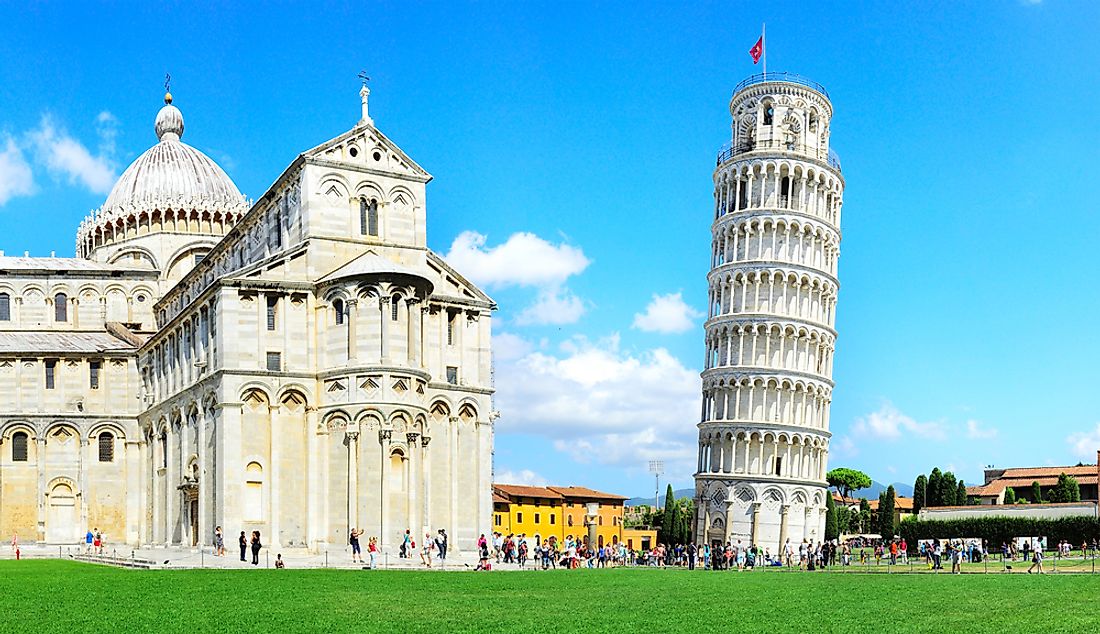Why Does the Leaning Tower of Pisa Lean?

The Leaning Tower of Pisa, simply known as Tower of Pisa, is a bell tower. As the name suggests, the tower actually leans on one of the sides. The Tower of Pisa is located behind the Pisa Cathedral and is among the oldest buildings in the Pisa Cathedral Square. The tower was constructed in the 12th century and began tilting almost immediately in the process of construction due to the inadequate foundation. The ground on one of the sides of the building was too soft to support the structure’s weight. The degree of the tilt increased over the years until the completion of the building 14th century. It was only stabilized in the early 21st century. The Tower of Pisa took about 344 years to be built.
The Design of the Tower
The Tower of Pisa is about 183.2 feet tall on the lower side and 185.9 feet on the higher side. The base of the building is 8 feet wide and it weighs approximately 14,500 metric tons. It has between 294 to 296 steps, with the 7th floor having fewer steps. Before the restoration work in 1990 and 2001, the structure had leaned at 5.5° but after the restoration, the building now leans at 3.990°. Meaning, the top part of the tower is horizontally displaced at about 12 feet from the center.
Construction
The building of the Leaning Tower began in August 1173 with the building of the ground floor. The building began leaning as soon as the building reached the second floor in 1178. The leaning was as a result of a mere 3-meter foundation set on unstable soil. The work was stopped for almost 100 years as a result of the continuous battle between the Republic and Genoa and Lucca, allowing for the soil beneath to settle. Clocks were installed on the unfinished building in 1198. The construction work resumed in 1272, with the engineers building the top floors with one of the side slightly higher than the other to compensate for the tilt, causing the building to appear curved. The construction was again halted in 1284 following the Pisan’s defeat in the Battle of Meloria. Between 1319 and 1372, the 7th floor was completed and bell-chambers added. There are seven bells hanging on the tower, with each bell representing a musical note. The Leaning Tower was temporarily closed to the public between 1989 and 2001 to allow for structural restoration and strengthening.
Will the Tower Fall Over?
Experts expect the Leaning Tower to lean for another 200 years before falling over. It may even stay almost upright forever if the restoration work is maintained. The restoration work undertaken from 1999 to 2001 stabilized the tower. The weight of the structure was placed on the north-end while soil below was extracted, allowing it slowly sink back. Some people are for the idea of the straightening of the tower but the people of Pisa would rather see it sink to the ground than be straightened. After all, how will it be called the Leaning Tower of Pisa if it does not lean?











